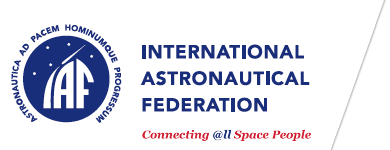session 7
- Title
Constellations and Distributed Systems
- type
oral
- Description
Small satellites offer important advantages in creating new opportunities for implementing spatially-distributed space-based systems (e.g. Constellations). In this session we focus on new, emerging, or enabling technologies that can be used or are being used to create networked data collection systems via small satellites. Specifically, Session B4.7 focuses on Constellations (e.g. Constellation missions for Earth Observation, IoT/M2M and LEO Communications), distributed architectures (e.g. Distributed SAR systems) and sensor systems and how these low-cost and rapidly delivered technologies offer the potential to fulfill complex user needs, working in coordination with other small or large space infrastructures (e.g. mega-constellations), as well as with airborne or terrestrial assets. Papers should show how cross-platform compatibility (both hardware and software aspects) can be used to enable these systems, any standards that are proposed or adopted, design techniques that enable this cross-platform compatibility, etc. We are particularly interested in technologies that enable small spacecraft to play an important role in upcoming applications, such as (but not limited to) civil security, telecommunications in remote areas, navigation support (e.g., along the new foreseen routes in the Arctic), natural disaster management (e.g., damage assessment and first responders support), and planetary exploration. In this regard, the development and usage of Commercial-off-the-shelf (COTS) technologies are also of specific interest to the session. Distributed systems and their impact in terms of new opportunities for the emerging Commercial Space Industry and new commercial space missions with small platforms is also of specific interest to the session. The integrated applications of these sensor systems are covered in Symposium Session B5.2, and the broader view of tools and technologies to enable integrated applications are covered in B5.1. In B4.7 authors are also invited to analyze technological enhancements and new developments needed to guarantee small satellite integration with existing and scheduled assets from both the bus and payload perspectives. Also analysis of inter-operability within integrated systems can be addressed, like payload data management, spacecraft operation, and formation flying.
- Date
2025-09-30
- Time
- Room
- IPC members
Co-Chair: Dr. Rainer Sandau, International Academy of Astronautics (IAA), Germany;
Co-Chair: Prof. Michele Grassi, University of Naples "Federico II", Italy;
Rapporteur: Dr. Jaime Esper, National Aeronautics and Space Administration (NASA), United States;
Rapporteur: Dr. Maria Daniela Graziano, University of Naples "Federico II", Italy;
Order | Time | Paper title | Mode | Presentation status | Speaker | Affiliation | Country |
|---|---|---|---|---|---|---|---|
1 | 15:00 | KEYNOTE: Innovative Space Factory: Transforming Small Satellite Production | 20 | confirmed | Dr. Marco Di Clemente | Italian Space Agency (ASI) | Italy |
2 | 15:20 | 10 | confirmed | Mrs. Lucrezia Lovaglio | Politecnico di Torino | Italy | |
3 | 15:30 | Collision risk assessment and avoidance methods for safe autonomous proximity operations | 10 | confirmed | Dr. Giacomo Borelli | Politecnico di Milano | Italy |
4 | 15:40 | Vertical Federated Learning in Satellite Constellations for Lower Earth Orbit | 10 | confirmed | Mr. Francisco Freitas | Faculdade de Ciências e Tecnologia - UNL | Portugal |
5 | 15:50 | Cluster flying algorithm for sparsely connected satellite swarms | 10 | confirmed | Prof. Zhaokui Wang | Tsinghua University | China |
6 | 16:00 | Unlocking Space: The Impact of Standardization in Launch Services on Accessibility and Innovation | 10 | confirmed | Ms. Nageswara Saieswara Nidhi Mayurika Alapati Kameswara | Monash University | Australia |
7 | 16:10 | USING PASSIVE AERODYNAMIC FORCES FOR THE FORMATION FLYING CONTROL OF THE ANSER CLUSTER | 10 | confirmed | Dr. Iván Castro Fernández | Instituto Nacional de Tecnica Aeroespacial (INTA) | Spain |
8 | 16:20 | 10 | confirmed | Dr. Markus Sauer | Siemens AG | Germany | |
9 | 16:30 | ANSER cluster - Achievements of a cubesat distributed system after more than one year in orbit | 10 | confirmed | Mr. Cesar Arza | Instituto Nacional de Tecnica Aeroespacial (INTA) | Spain |
10 | 16:40 | 10 | confirmed | Dr. Takaya Inamori | Nagoya University | Japan | |
11 | 16:50 | Space Eye (SpEye): Preliminary Design of an On-Orbit Inspection and Formation-Flying Demonstration | 10 | confirmed | Dr. Vincenzo Capuano | Techno System Developments S.R.L. | Italy |
12 | 17:00 | 10 | confirmed | Mr. Egon Travaglia | ECyT, National University of San Martin (UNSAM) | Argentina | |
13 | 17:10 | 10 | confirmed | Mr. Kai Nakamura | University of Tokyo | Japan | |
14 | 17:20 | 10 | confirmed | Prof. Marco Sabatini | Sapienza University of Rome | Italy |
